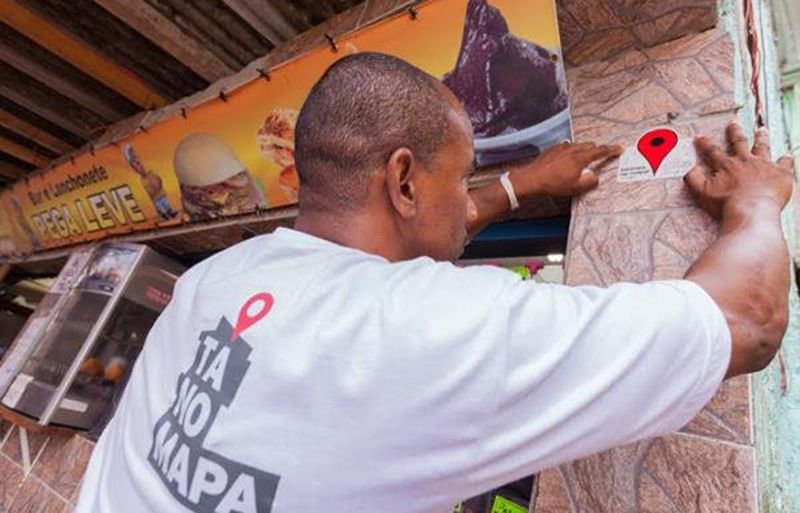Mapping Rio’s Favelas
Ahead of the Olympics, Google and a Brazilian nonprofit have been recruiting locals to pinpoint businesses and other landmarks in the city’s shantytowns
/https://tf-cmsv2-smithsonianmag-media.s3.amazonaws.com/filer/86/17/8617d12d-3f0e-4020-8f98-d87e3704be5b/santa-marta-favela.jpg)
To many of those unfamiliar with them, Rio de Janeiro’s favelas—dense urban settlements of cheap, sometimes illegally built dwellings and shops—are objects of fear and curiosity. Outsiders associate these neighborhoods with extreme poverty, drugs and crime, and rarely visit, though they house nearly 25 percent of Rio’s population.
But for the past several years, Google and a Brazilian nonprofit called AfroReggae have been working to do something that might help break down barriers between the favelas and their surrounding areas: map them.
The winding streets and alleys of Brazil’s favelas are tricky or impossible to traverse by car, making them difficult to map through Google Map’s traditional vehicle-based system. Additionally, fears of crime have kept outsider camera crews from attempting a pedestrian mapping effort. So most Rio favelas appear as blank spots on Google Maps, as if they do not exist. Even if non-residents wanted to visit, they would have no way of finding their way around, let alone locate a business, leaving favela residents in economic isolation. In an attempt to remedy this, AfroReggae is equipping favela locals with cell phones and training them on Google mapping technologies. The project is called “Tá no Mapa” (it’s on the map).

“The mappers are all recruited from the communities,” says Ronan Ramos, a project manager at AfroReggae. “They know the streets, alleys, squares, small business and other interesting locations that they want to show, and they are proud to put the their community in the digital world.”
So far, the project has mapped 25 favelas since efforts began in 2014, pinpointing local businesses and institutions, such as grocery stores, schools, bars and restaurants. Organizers expect to complete 30 by the end of the year. While this is only a fraction of Rio’s 1,000-some favelas, AfroReggae believes it’s making a big difference. According to Ramos, favela residents, historically viewed as outcasts by many non-favela residents, are beginning to feel that they’re part of the wider community.
“They can see their own place on the internet the same way a person in the "asphalt" [a term for non-favela areas] can be seen,” he says.
Mapping the areas could also have practical benefits, such as allowing ambulances and other emergency personal to find locations, or to make it easier to install services like sanitation.

Non-favela residents will also benefit from having cultural stereotypes broken down, Ramos says. Favelas are often viewed as being culturally, economically and technologically disconnected from the rest of the city, when many argue they’re not as different. According to studies reported by Catalytic Communities, a nonprofit dedicated to improving quality of life for favela residents, most favela homes are made out of solid materials like brick and steel (in contrast to their shantytown image), at least 9 out of 10 young favela residents are connected to the internet, and nearly two-thirds of favela residents are considered middle class by Brazilian economic standards.

While some favelas do have high drug and crime rates, others are considered “pacified,” or equipped with a community police force that has driven down crime. The project began with the more pacified favelas. Yet, according to these studies, only 14 percent of those who had never visited a favela have a “favorable” perception of favelas as a whole, and 64 percent describe their perception as “unfavorable.”
With Tá no Mapa, non-favela residents will “start to see the good things there and not only the information of violence produced by media,” Ramos says.
As local favela businesses begin to appear on Google Maps, Tá no Mapa proponents hope outsiders will consider shopping there, boosting the local economy. Rather than viewing the favelas as impenetrable, mysterious slums, they’ll start to see them simply as local neighborhoods.

Mapping the rest of the city’s favelas won’t be easy. Some of the pacified favelas have been experiencing increased crime rates of late, despite government efforts to shore up security ahead of the Olympics. And project members have yet to extend into some of the city’s more dangerous ones.
But as the eyes of the world turn to Rio next month, mappers hope their efforts will help make the favelas a little less mysterious, and a little bit more a part of the fabric of everyday life in this vibrant metropolis.
/https://tf-cmsv2-smithsonianmag-media.s3.amazonaws.com/accounts/headshot/matchar.png)


/https://tf-cmsv2-smithsonianmag-media.s3.amazonaws.com/accounts/headshot/matchar.png)